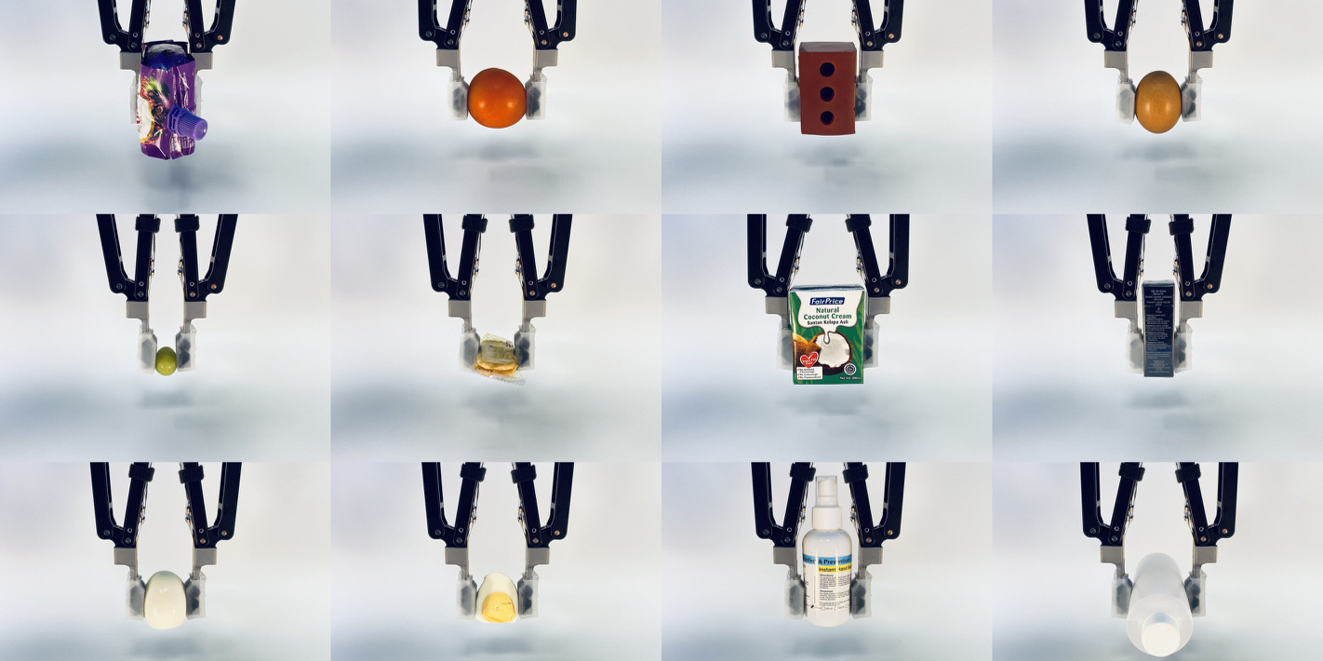Robotics Ecosystem : Equipping robots with a sense of touch

We typically don’t think twice about picking up a bottle or a piece of fruit – but these are deceptively complex tasks for robots. The ability to understand how to grasp an object firmly enough to not let it slip, yet gently enough to avoid damaging it, requires precise tactile perception capabilities along with an intelligent sensory information processing centre.
Robots with mixed feelings
Most of today’s robots face challenges with such tasks, because they operate primarily based on visual processing, or a ‘sense of sight’. Founded in 2020, TacniQ marries expertise from computer science and bioengineering to give robots a ‘sense of touch’ through a proprietary technology sensor known as Tac-01. The company combines vision with the Asynchronously Coded Electronic Skin (ACES) platform, an advanced artificial skin capable of detecting touch more than 1,000 times faster than the human sensory nervous system, and an artificial brain system that mimics a biological neural network. Together with machine learning models for tactile perception and inference, these capabilities enable robots to perform tasks that involve identifying an object’s texture and weight, and determining the right amount of strength needed to grasp delicate items without damaging them.
Putting robots to work
Robots with accurate and efficient sensing capabilities are ideal for boosting productivity on the production line, and can help manufacturers in areas such as speed of prototyping and minimising of product damage. This is especially relevant today, as manufacturers globally grapple with labour shortages, and governments look to increase local production for a wider range of goods following supply chain disruptions experienced over the last two years.
Improving machine dexterity: TacniQ’s Tac-01 solution leverages novel tactile intelligence algorithms to enable robots to pick a large range of objects with varying physical properties as gently as possible, while intelligent slip detection allows the robots to recognise when an object is slipping out of its grasp, and react accordingly. This is particularly useful in settings like food manufacturing plants, as the robots are able to handle delicate food items such as eggs, tomatoes and grapes, as well as other objects such as cartons and bottles without damaging or deforming the product.
Boosting supply chain productivity: Using TacniQ’s generalised tactile algorithms, the system can detect and grasp a large variety of objects with different physical properties without reconfiguration. The robots are tuned to provide high and continuous uptime, with pick-and-place cycle times below six seconds on a Universal Robots UR10e. This ability of the robots to learn to handle different objects intuitively can help manufacturers reach new frontiers in customised production, adapting to different prototypes immediately without the need for lengthy configuration processes.
Unlocking opportunities in the Industry 4.0 era
TacniQ’s research represents a promising step forward towards building power-efficient and trustworthy robots capable of responding quickly and appropriately in unexpected situations. With its sights set on advancing robotic applications in the logistics and food manufacturing industries, the company expects to launch its first prototypes for customer use in 2023. Visit TacniQ’s website for more information about the research and technologies that power its robotic solutions.
